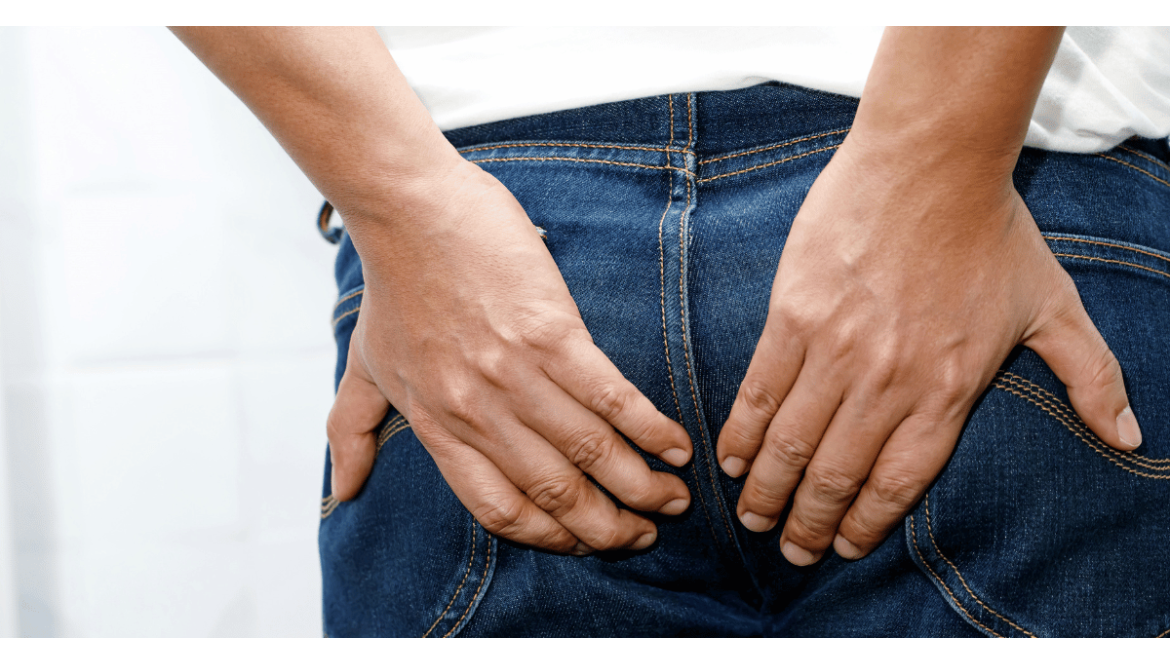What causes a perineal tear in men?

A perineal tear in men can lead to pain, urinary disorders and discomfort.
Discover the main causes, symptoms and solutions to prevent and effectively treat this little-known injury.
What causes a perineal tear in men?
When we talk about the perineum, we often think (wrongly!) that it only concerns women.
However, men also have a perineum, and this small group of muscles plays a key role in their day-to-day well-being. So when a perineal tear occurs, it's a real blow!
But what can cause such an injury? How can you recognize the signs, and above all, how can you avoid complications? Let's delve into the subject together.
Before you start reading this article, we recommend that you know what the perineum is. To do so, don't panic, read our article: What is pelvic area? to understand this article in its entirety.
The male perineum: a discreet but essential player
The male perineum is a bit like the foundations of a building. You can't see it, but it supports a whole range of organs and plays a central role in urinary continence, sexual function and pelvic stability.
A perineal tear is an injury to the muscles and tissues in this area, and believe us, it's no mere scratch.
Depending on its severity, it can lead to intense pain, urinary problems and even more serious complications.
What causes a perineal tear in men?
Unlike women, in whom perineal tears are often related to childbirth, the causes in men are different and sometimes unrecognized. Here are the main ones:
1) Trauma and accidents
A direct blow to the perineal area can cause a tear. This can happen in :
- a cycling accident (an ill-adapted saddle pressing too hard on the perineum),
- a sudden fall onto a hard surface,
- contact sports (rugby, martial arts, intensive cycling).
-> Imagine your perineum as a trampoline net: if it suffers too violent or repeated a shock, it can end up tearing!
2) Excessive pressure on the perineum
Certain lifestyle habits increase pressure on the perineum, weakening the tissues:
Chronic constipation: forcing yourself too often when going to the toilet can create micro-lesions that eventually lead to tearing.
Carrying heavy loads without prior perineal contraction: poorly distributed effort can exert too much pressure on the area.
-> Bonus tip? Adopt good toilet posture and avoid unnecessary straining.
3) Surgical procedures and medical complications
Certain prostate or rectal operations can weaken perineal tissues and increase the risk of tearing. Post-surgical complications, such as infections or poor healing, may also be involved.
-> After surgery, perineal reeducation is essential to avoid these discomforts!
4) Risky sexual practices
Certain forms of sexual intercourse can put significant strain on the perineum.
Practices involving excessive pressure or lack of lubrication can generate micro-tears, which worsen over time.
-> Listening to your body and favoring a progressive approach is the key to avoiding injury.
What are the symptoms of a perineal tear?
A perineal tear doesn't go unnoticed! Here are the warning signs:
> Pain or burning sensation in the perineal area.
> Difficulty urinating or discomfort during micturition
> Visible bleeding or bruising
> Pain during intercourse
> Sensation of instability or weakness in the pelvis
-> If you experience these symptoms, don't wait: consult a healthcare professional!
How to prevent and treat a perineal tear?
- Adopt good posture and protective reflexes: avoid sitting on hard surfaces for long periods, don't force yourself when going to the toilet.
- Practice perineal strengthening exercises: yes, men too can (and should!) do sheathing and targeted exercises for the perineum.
- Consult a specialist: a physiotherapist or osteopath can help you prevent imbalances and improve the health of your perineum.
- Listen to your body: in the event of pain or discomfort, it's best to slow down and avoid aggravating the situation.
Our opinion on the subject?
The male perineum is all too often forgotten.
Yet it is involved in many essential functions! A perineal tear is not trivial, and deserves prompt attention.
Fortunately, with good prevention and awareness, it's possible to avoid these inconveniences.
Have you ever heard of this problem? Share this article with a loved one who might be concerned!
